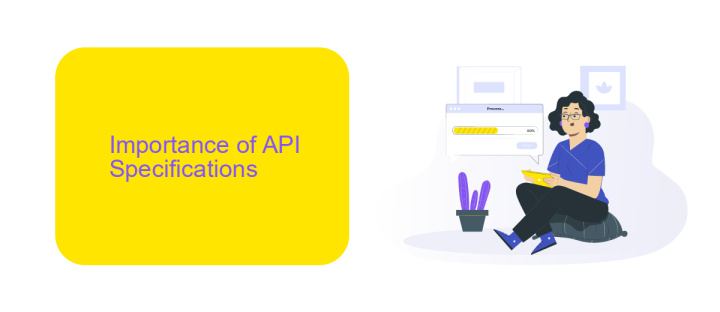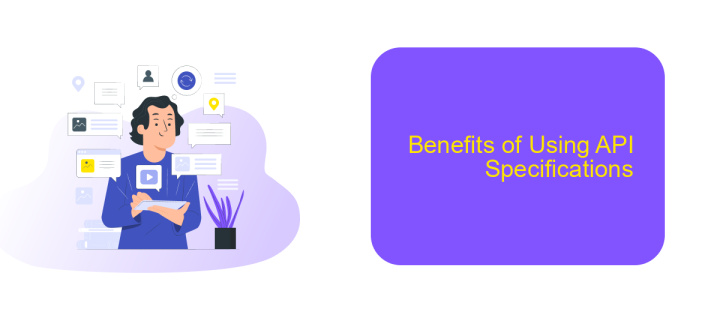What is API Specification in MuleSoft
API specification is a critical component in MuleSoft, providing a blueprint for how APIs should function. It defines the structure, behavior, and interactions of an API, ensuring seamless integration and communication between different systems. In this article, we will explore what an API specification entails in the context of MuleSoft, its importance, and how it facilitates efficient API development and management.
Introduction to API Specifications
API specifications are essential in defining how different software components should interact with each other. They provide a blueprint for developers to follow, ensuring that APIs are consistent, reliable, and easy to use. In MuleSoft, API specifications play a crucial role in the development and integration of various services and applications.
- Define the structure and behavior of APIs.
- Ensure consistency across multiple API implementations.
- Facilitate easier collaboration among development teams.
- Improve the reliability and security of API interactions.
Using a service like ApiX-Drive, developers can streamline the integration process by automating data transfers between different applications. This not only saves time but also reduces the risk of human error. By leveraging API specifications, ApiX-Drive ensures that all integrations are seamless and efficient, providing a robust solution for businesses looking to enhance their digital ecosystems.
Importance of API Specifications

API specifications are crucial in ensuring seamless integration and communication between different software systems. They provide a clear, standardized blueprint that developers can follow, ensuring that APIs are implemented consistently and correctly. This reduces the risk of errors and miscommunications, which can lead to costly downtime and inefficiencies. By defining the expected inputs, outputs, and behaviors of an API, specifications enable developers to work more efficiently and effectively, speeding up the development process and improving the overall quality of the software.
Moreover, API specifications play a vital role in maintaining interoperability between various services and platforms. For instance, tools like ApiX-Drive utilize API specifications to facilitate the integration of different applications, automating data transfer and synchronization processes. This not only saves time but also enhances the reliability of integrations, making it easier for businesses to scale their operations and adapt to changing needs. In summary, API specifications are essential for creating robust, scalable, and interoperable systems that can meet the demands of modern software development.
Components of an API Specification

API specifications are essential for defining how different software components should interact. They provide a blueprint for developers, ensuring consistent and reliable communication between services. In MuleSoft, an API specification outlines the structure and behavior of an API, helping to streamline integration processes and improve collaboration.
- Endpoints: These are the specific URLs where the API can be accessed, defining the entry points for the API's resources.
- Methods: These define the operations that can be performed on the API's resources, such as GET, POST, PUT, and DELETE.
- Request and Response Formats: These specify the data formats (e.g., JSON, XML) that the API accepts and returns, ensuring data consistency.
- Authentication: This outlines the security mechanisms required to access the API, such as API keys, OAuth, or other authentication methods.
- Rate Limiting: This defines the limits on the number of API requests that can be made within a specific time frame to prevent abuse and ensure fair usage.
By clearly defining these components, an API specification in MuleSoft ensures seamless integration with services like ApiX-Drive, which helps automate and streamline data transfer between different applications. This facilitates efficient and reliable integrations, reducing development time and enhancing system interoperability.
Benefits of Using API Specifications

API specifications in MuleSoft provide a structured framework for designing and documenting APIs, ensuring consistency and clarity across development teams. By defining clear guidelines, they help streamline the development process and reduce the likelihood of errors.
One of the primary benefits of using API specifications is the ability to facilitate better communication between developers and stakeholders. This ensures that everyone involved has a mutual understanding of the API's functionality and expected outcomes.
- Enhanced collaboration: API specifications enable seamless teamwork by providing a common reference point.
- Improved integration: Tools like ApiX-Drive simplify the process of connecting different systems, making integrations more efficient.
- Consistency: Standardized specifications ensure that APIs are designed uniformly, reducing complexity.
- Documentation: Comprehensive API specifications serve as valuable documentation for future reference and maintenance.
In conclusion, utilizing API specifications in MuleSoft not only enhances the development process but also ensures that integrations are robust and scalable. Services like ApiX-Drive further streamline these integrations, making it easier to connect various applications and automate workflows.
Best Practices for API Specifications
Creating a robust API specification in MuleSoft is essential for ensuring seamless integration and interoperability. One best practice is to clearly define the API's purpose and scope, which helps in setting the right expectations for developers and stakeholders. Use consistent naming conventions and standardized data formats to maintain clarity and uniformity. It's also crucial to include detailed documentation, outlining each endpoint, method, and parameter, as well as providing examples and use cases to guide users effectively.
Another important aspect is to implement security best practices, such as using OAuth for authentication and HTTPS for secure communication. Regularly update and version your API to accommodate new features and improvements while maintaining backward compatibility. Tools like ApiX-Drive can be invaluable in simplifying the integration process, offering a user-friendly interface to connect various services and automate workflows. By adhering to these best practices, you can create a reliable and efficient API that meets the needs of your users and stands the test of time.


FAQ
What is an API Specification in MuleSoft?
Why is an API Specification important in MuleSoft?
How do I create an API Specification in MuleSoft?
Can I automate the integration of APIs defined by MuleSoft's API Specifications?
What tools can I use to test my API Specification in MuleSoft?
Apix-Drive is a simple and efficient system connector that will help you automate routine tasks and optimize business processes. You can save time and money, direct these resources to more important purposes. Test ApiX-Drive and make sure that this tool will relieve your employees and after 5 minutes of settings your business will start working faster.

